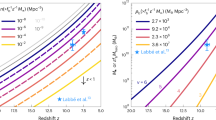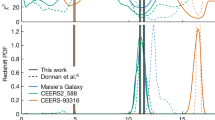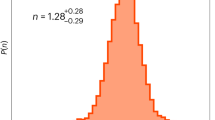Abstract
Close QSO pairs can be used to test the cosmological interpretation of QSO redshifts. If (some of) the narrow absorption lines in QSO spectra arise in intervening matter, and if QSOs are surrounded by gaseous haloes or located in regions of high matter density (for example, clusters of galaxies), one may expect to find absorption in the spectrum of one QSO at the redshift of a foreground QSO which happens to be located nearby on the plane of the sky (‘associated absorption’). According to the cosmological interpretation, the foreground QSO should have the lower redshift. If, on the other hand, QSO redshifts are unrelated to their distances, one would expect to find as many cases in which the foreground QSO has the higher redshift of the two; or if the absorption lines are not even due to intervening matter, there should be no coincidences of absorption and emission redshifts beyond random expectation. Thus, by using associated absorption to distinguish which QSO of a pair is in front of the other, we have a simple and straightforward test of the cosmological interpretation.
This is a preview of subscription content, access via your institution
Access options
Subscribe to this journal
Receive 51 print issues and online access
$199.00 per year
only $3.90 per issue
Buy this article
- Purchase on Springer Link
- Instant access to full article PDF
Prices may be subject to local taxes which are calculated during checkout
Similar content being viewed by others
References
Sargent, W. L. W., Young, P. J., Boksenberg, A. & Tytler, D. Astrophys. J. Suppl. 42, 41 (1980).
Young, P., Sargent, W. L. W. & Boksenberg, A. Astrophys. J. Suppl. 48, 455 (1982).
Burbidge, E. M., Smith, H. E., Weymann, R. J. & Williams, R. E. Astrophys. J. 218, 1 (1977).
Shaver, P. A. & Robertson, J. G. Astrophys. J. Lett. (in the press).
Wright, A. E., Morton, D. C., Peterson, B. A. & Jauncey, D. L. Mon. Not. R. astr. Soc. 199, 81 (1982).
Shaver, P. A., Boksenberg, A. & Robertson, J. G. Astrophys. J. Lett. 261, L7 (1982).
Sargent, W. L. W., Young, P. & Schneider, D. P. Astrophys. J. 256, 374 (1982).
Robertson, J. G. & Shaver, P. A. Preprint.
Author information
Authors and Affiliations
Rights and permissions
About this article
Cite this article
Shaver, P., Robertson, J. A new test of the cosmological interpretation of QSO redshifts. Nature 303, 155–156 (1983). https://doi.org/10.1038/303155a0
Received:
Accepted:
Issue Date:
DOI: https://doi.org/10.1038/303155a0
This article is cited by
-
QSO absorption lines (invited review)
Astrophysics and Space Science (1986)
Comments
By submitting a comment you agree to abide by our Terms and Community Guidelines. If you find something abusive or that does not comply with our terms or guidelines please flag it as inappropriate.



